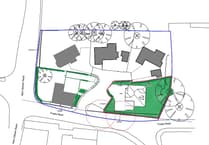Three options for the restructure of councils in Hampshire and the Solent are being developed by the majority of the region’s local authorities.
Each of these proposals would see the creation of four new unitary authorities delivering all council services, with Isle of Wight Council remaining a stand-alone entity.
One option being considered would involve boundary changes, councillors have been told.
Thirteen of the 15 councils that cover the region are working together on these possible outcomes for local government reorganisation (LGR).
Hampshire County Council and East Hampshire District Council pulled out of this collaboration last month, instead favouring to work on their own proposals as a partnership.
This came less than two months after a joint interim plan from all 15 local authorities was submitted to the Ministry of Housing, Communities and Local Government.
Central government has set councils a deadline of September 26 to each make a final submission on their preferred approach for LGR.
Under the national plans, the current two-tier system will be replaced with larger unitary authorities, with existing councils abolished in 2028.
As reported, the region’s local authorities paid external consultants from KPMG to help explore merger options.
Members of Southampton City Council’s governance committee received an update on the current state of play at a meeting on Monday, June 2.
Director of strategy and performance Munira Holloway said the city council was still part of the collective regional effort alongside 12 other councils (Basingstoke and Deane, Eastleigh, Fareham, Gosport, Hart, Havant, Isle of Wight, New Forest, Portsmouth, Rushmoor, Test Valley and Winchester).
“Hampshire County Council and East Hampshire have pulled out of that process and are looking to develop their own proposals to submit to government,” Ms Holloway said.
“Since the interim submission, there have been regular meetings with chief executives and council leaders to narrow down the potential configuration options.
“Where we are at now is that three options are being developed, all of which have four unitaries on the main land, plus the Isle of Wight as an exception.
“Two of those options are without boundary changes and one of them is with boundary changes.”
Members were told each council will only be allowed to support one option in their final submission.
Liberal Democrat councillor Thomas Gravatt asked if members would be able to receive details on the three options that are being explored through the joint work with KPMG.
Officers’ initial response was that this would be possible.
A recommendation was made by the committee that the options and indicative information currently available should be shared with all city councillors as soon as possible.
In a statement released on May 13, Hampshire County Council leader Nick Adams-King said the upper tier authority would be progressing their own work to develop a proposed model for local government.
He said this would prioritise “the best interests of residents”, while “seeking to secure a financially strong future” for the services the county council delivers.
Three days later, East Hampshire District Council announced it was taking a “new course to ensure effective and efficient reorganisation”.
This involved working in partnership with the county council to develop a “financially sustainable proposal”.
District council leader Cllr Richard Millard said: “Our focus is clear: delivering what’s best for residents across all our communities and securing a financially sustainable future for the services we provide.”
-(1).jpeg?trim=167,0,169,0&width=752&height=501&crop=752:501)




Comments
This article has no comments yet. Be the first to leave a comment.